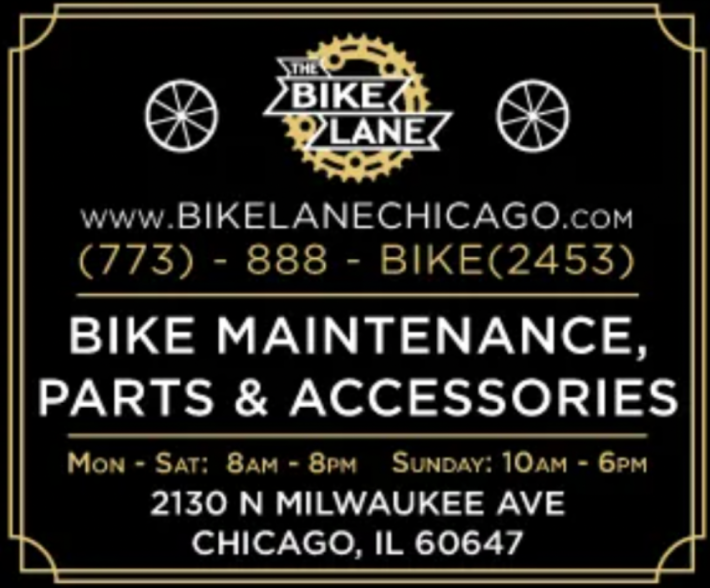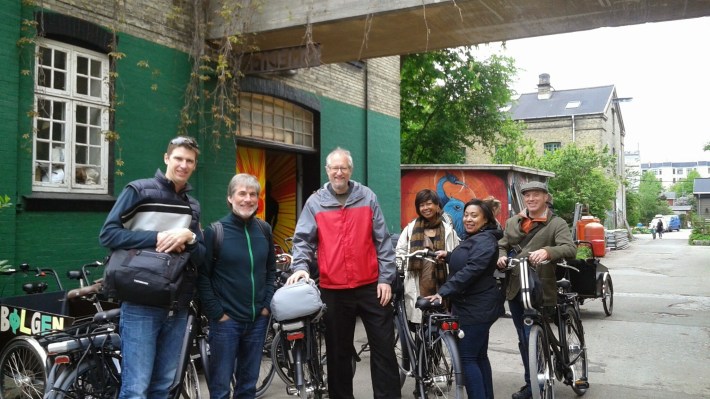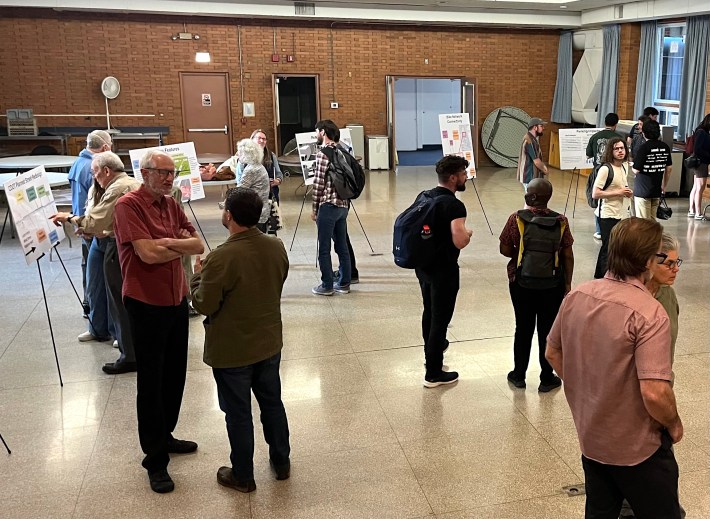
Randy Neufeld needs no introduction among local walk/bike/transit fans. He's been promoting green modes for a living since 1987, not long after the Chicago Bears released "The Super Bowl Shuffle". His many accomplishments include helping to launch the Chicagoland Bicycle Federation, which evolved into the Active Transportation Alliance, and then running the SRAM Cycling Fund. He recently stepped down from that position to cofound GoodForUs.org, a new organization to reduce car-dependency. Streetsblog caught up with him for a review of what he's done over the years, and what's on the horizon. The interview has been edited slightly for brevity and clarifty.
John Greenfield: You and I go back quite a ways, to my earliest days working in Chicago sustainable transportation advocacy in the Nineties. But let's talk about the trajectory that your life has taken. What were you doing before you helped launch the Chicagoland Bicycle Federation, the precursor to the Active Transportation Alliance, in the late Eighties?
Randy Neufeld: That was in 1987, and I was a political organizer. I worked on Ron Sable's campaign. [Sable was a physician who ran for 44th Ward alderperson that year and nearly won, which would have made him Chicago's first openly LGBTQ alderperson.] And also Harold Washington's campaign [Washington was Chicago's first Black mayor, elected in 1983 and reelected four years later], and some others in '85 and '87.
I enjoyed political organizing, but needed something more longterm, and started talking to all my political friends. I wanted something with all the political intrigue, but more of a steady gig.
I ran into a group that was organizing the Chicagoland Bicycle Federation at the time. It was an all-volunteer group. They were about two years old, and they were struggling a little bit. I told them they should hire me, they told me they didn't have any money, and I said, "Hire me and we'll raise it."
So then I started as the first executive director of the Chicagoland Bicycle Federation in December of 1987. I worked part-time, and then after a year I worked full-time. We slowly grew, and I grew up with the organization, both in my skill as an advocate and organizer, as well as knowledgeable about bike advocacy.
When I started there were probably five people in the country doing what I was doing, and now there are hundreds, And so I used other groups... there was a group in Hawaii that I didn't know about, there was [Washington Area Bicyclist Association] in DC, there was [Transportation Alternatives] in New York City... and so I started using my connections with those folks and started doing bike advocacy.
JG: Your time as the executive director of CBF lasted until when?
RN: I was executive director until 2004. And then I was chief strategy officer from 2005 through 2008. Before 2004 we had decided that there was a synergy between pedestrian and transit advocacy with cycling advocacy. We expanded our mission, and we hired a new executive director, Rob Sadowsky, I became chief strategy officer, and we launched the Healthy Streets campaign.
That was the brand we used for all the work that wasn't cycling, the transit and pedestrian work. It was Safe Routes to School, what was the version of Vision Zero at the time called Drive With Care, Home Zones, and just all the things that weren't cycling related that we wanted to do. So that was my job, to help shepherd those things.
And then in 2009 I left and went to SRAM Corporation [a Chicago-based bicycle parts manufacturer].
JG: And what exactly were you doing at SRAM?
RN: In 2008 the company established the $10 million SRAM Cycling Fund, and Stan Day, F.K. Day, and Mike Mercuri, who were the main owners of SRAM, they hired me to run that fund. It was becoming a global player in cycling advocacy for infrastructure, and we spent $6 million over a ten-year period.
JG: What were some of the projects you did with the fund?
RN: We were the earliest funders of Safe Routes to School in the U.S., and helped the Safe Routes to School Partnership get going. We helped the the Alliance for Biking and Walking and the League of American Bicyclists get more money for advocacy. There was a project called Advocacy Advance.

But probably the capstone, spotlight project was the Green Lane Project. We had two cohorts of six cities, and basically we institutionalized protected bike lanes in the U.S.
JG: Were you involved in SRAM's project to distribute bicycles in developing nations?
RN: What you're talking is World Bicycle Relief, which is a [non-governmental organization] that works primarily in Africa. They have a bike that's specifically designed for the African environment, the Buffalo Bicycle. And F.K. Day, the executive V.P. who's on the board of SRAM, is one of the founders of that organization. I helped them out on some policy connections and political connections. But they work in the developing world, while the SRAM Cycling Fund worked totally in SRAM's markets, Europe and North America, a little bit of Australia and Asia as well.
JG: When did you leave the SRAM Cycling fund?
RN: I retired from SRAM in September and worked part-time through the end of March.

JG: So what are you up to now?
RN: With some other folks I started a new non-for-profit called GoodForUs.org. We work behavior change around helping people maximizing "activing" and minimizing driving in daily life. "Activing" is running, walking, biking, and other human-powered movement to the extent of each person's ability.
Basically what GoodForUs.org does is, we offer partners and community organizations a platform for shared resources, incentives, know-how, organizing, measurement. Basically we're trying to create community around folks who want to drive less, and use active mobility in daily life.

JG: To wrap things up Randy, I'll just say you've been a huge influence on me as a sustainable transportation advocate. And I know you've been an influence on many other people and things that have helped Chicago become a better place for walk/bike/transit in the decades you've been working on that here. So thanks for doing that. I know people appreciate what you've done.
RN: You're welcome.
JG: Anything you'd like to add?
RN: GoodForUs.org is really a work in progress. Hopefully there's a way we can pull it off. People can help by going onto the website and taking the MotorActive survey. And we've also released a survey for just the Chicago area to gauge people's interests in bicycle lending libraries.
Streetsblog will have coverage of the bike lending library project in the near future – stay tuned!

Did you appreciate this post? Please consider making a tax-deductible donation.




